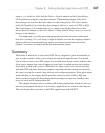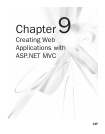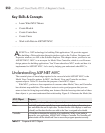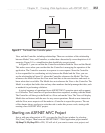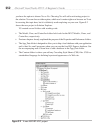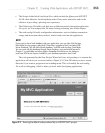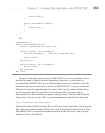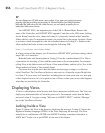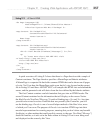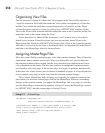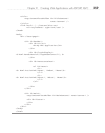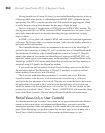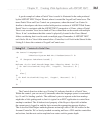
Chapter 9: Creating Web Applications with ASP.NET MVC 255
return View();
}
public ActionResult About()
{
return View();
}
}
}
VB:
<HandleError()> _
Public Class HomeController
Inherits System.Web.Mvc.Controller
Function Index() As ActionResult
ViewData("Message") = "Welcome to ASP.NET MVC!"
Return View()
End Function
Function About() As ActionResult
Return View()
End Function
End Class
Listing 9-1 demonstrates how closely ASP.NET MVC is tied to conventions. Notice
that the class name is HomeController. Appending Controller to a class name is a
convention that ASP.NET MVC uses to identify which classes are controllers. Also, the
methods in the class are referred to as Actions in ASP.NET MVC. Using the Controllers
folder for a Controller, appending the class name with Controller, and available actions
are all conventions that you must follow. The following URL, a browser address,
demonstrates how these conventions support routing to find a Controller and invoke the
About action. You can see this URL if you run the application and click the About tab:
http://localhost:1042/Home/About
The http://localhost:1042 part of the URL is a Web server that is built into VS and runs the
Web application without needing a Web server such as Internet Information Server (IIS).
The number 1042 is a random port number generated by the Web server, and your port
number is likely to be different.



